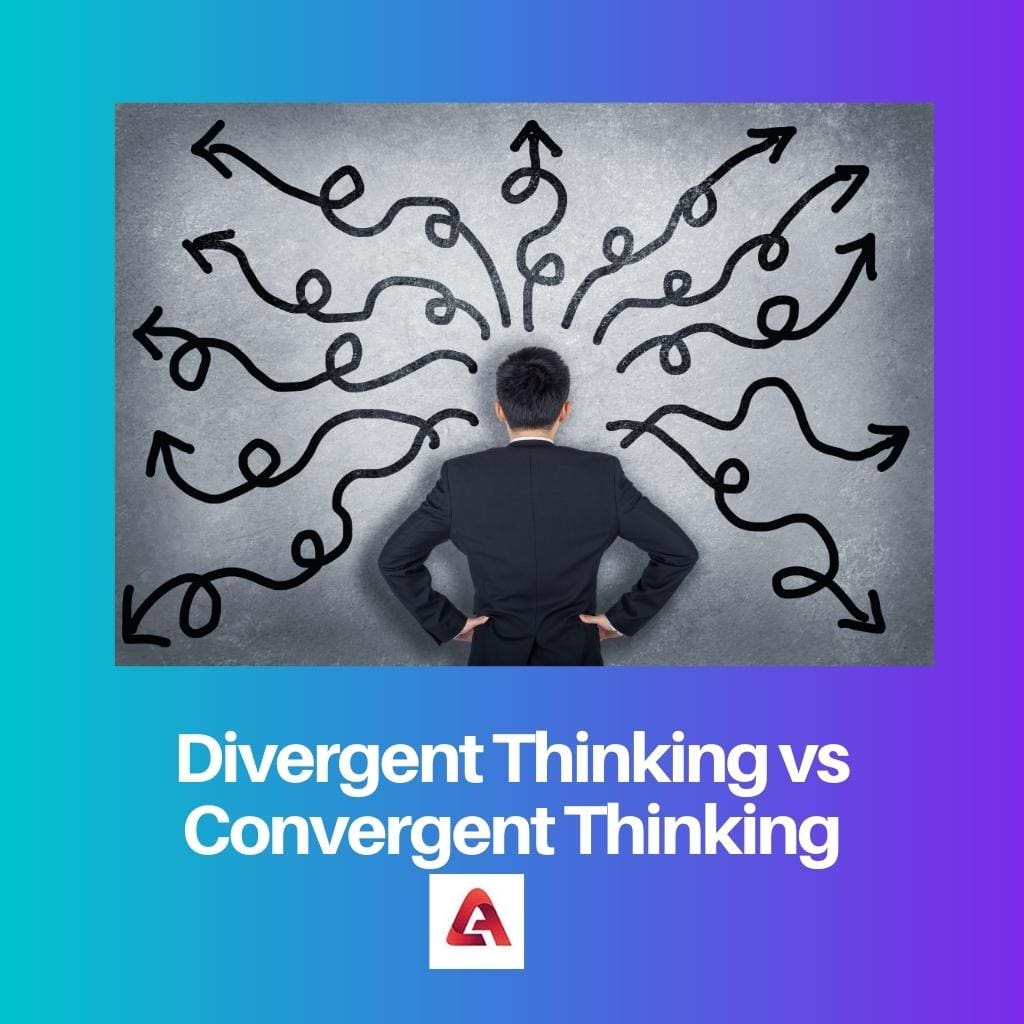In our daily lives, both convergent and divergent thought is important. Neither is significantly superior to the other. We need to use these opposing mental mechanisms in tandem to perform well in different tasks.
When confronted with a dilemma, we must consider a variety of choices (divergence). After that, we pinpoint our options and choose the correct option (convergence).
Key Takeaways
- Divergent thinking is a type of creative thinking that involves generating multiple ideas and possibilities. In contrast, Convergent thinking is a type of critical thinking that consists in analyzing and evaluating different ideas to arrive at a single, optimal solution.
- Divergent thinking is characterized by a free-flowing and spontaneous thought process, while convergent thinking is more focused and structured.
- Divergent thinking is helpful for brainstorming and coming up with new ideas, while convergent thinking is useful for problem-solving and decision-making in situations that require a definitive answer.
Divergent Thinking vs Convergent Thinking
The difference between Divergent and Convergent thinking is that Divergent thinking looks in all directions for a solution, while convergent thinking is more specific and focuses on the ideal option. Convergence suggests the use of existing methods, while divergence considers new concepts.

Divergent thinking refers to the process of exploring multiple solutions to a problem. It’s called “lateral thought” after Edward De Bono minted the term. He suggested that indirect and innovative methods solve problems as being among the leading experts on innovation.
Convergent Thinking focuses on determining a predetermined solution to a problem. Organized tests, like multiple-choice objects, recognition, and arithmetic problems, use this method.
Convergent thinking is a way of thinking that aims to find a single, well-known solution to a problem. It aims to find the best or most frequently right response to a query.
Comparison Table
| Parameters of Comparison | Divergent Thinking | Convergent Thinking |
|---|---|---|
| Characteristics | Divergent Thinking is more of an instinctual type of thought. | Convergent Thinking relies on speed and efficiency while focusing on a single solution to a problem. |
| Ideas Generated | Divergent Thinking allows the mind to flow freely in different directions. | It lays more emphasis on logic rather than free-flowing. |
| Direction used | The divergent Thinking thought process looks in all directions for a solution. | It is more linear and focuses indulgently on the best solution. |
| Certainty | Divergent Thinking explores all the available ideas with a wide range of perspectives to a problem or solution. | Since Convergent thinking is more about logic, it focuses more on the certainty part. |
| Person’s Personality | People who like to explore more ideas and are extrovert in nature rely more on this process. | Introvert people with a straightforward approach always opt for Convergent Thinking. |
What is Divergent Thinking?
Divergent thinking refers to the process of exploring multiple solutions to a problem. It’s called “lateral thought” after Edward De Bono minted the term.
He suggested that indirect and innovative methods solve problems as being among the leading experts on innovation. Critical thinking, imaginative artwork, brainstorming ideas, and strategizing are all good examples of how to use this mindset.
That way of thinking necessitates one to think beyond the box and come up with new ideas. The options are limitless. Divergent thinking allows us to see commodities in new and different ways.
Concept mapping is the easiest way to put the implications of divergent thought on paper. Visual aids are collections of ideas that branch off in various directions from one another.
When someone is in a “divergent thinking” state, they don’t need to use a ton of reasoning. Remember that they’re growing, not restricting, what’s conceivable. Several solutions are investigated in a short period, and surprising correlations are made.
The ability to visualize complex, multifaceted, multilayered or nuanced items or ideas is a part of Divergent Thinking. In short, complexity and curiosity is part of divergent thinking.

What is Convergent Thinking?
Convergent Thinking focuses on determining a predetermined solution to a problem. Organized tests, like multiple-choice objects, recognition, and arithmetic problems, use this method.
Convergent thinking is a way of thinking that aims to find a single, well-known solution to a problem. It aims to find the best or most frequently right response to a query.
Convergent thinking focuses on remembering the familiar, reapplying strategies, collecting stored information, and highlighting tempo, precision, and logic.
It works well in cases where a solution is already known, and either needs to be remembered or figured out using decision-making techniques. Convergent thinking can lead to a single best response, allowing no space for uncertainty.
Responses are either correct or incorrect in this perspective.
The majority of the time, the response collected during the convergent thinking process is the best possible response. Convergent thinking is related to experience since it entails using common procedures to manipulate established knowledge.
Another critical element of creativity is expertise. Convergent thinking is a method used to solve creatively. When anyone uses logical thinking to deal with a problem, they make decisions based on expectations or possibilities.

Main Differences Between Divergent Thinking and Convergent Thinking
- Divergent Thinking is more instinctual, whereas Convergent Thinking relies on speed and efficiency while focusing on a single solution to a problem.
- Divergent Thinking allows the mind to flow freely in different directions. On the other hand, Convergent Thinking lays more emphasis on logic rather than free-flowing.
- The Divergent Thinking thought process looks in all directions for a solution. Convergent Thinking is more linear and focuses indulgently on the best solution.
- Divergent Thinking explores all the available ideas with a wide range of perspectives on a problem or solution. Since Convergent thinking is more about logic, it focuses more on the certainty part.
- People who like to explore more ideas and are extroverts in nature rely more on the Divergent Thinking process. Introvert people with a straightforward approach always opt for Convergent Thinking.




